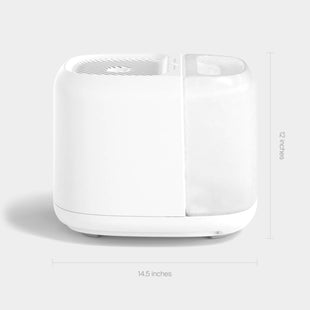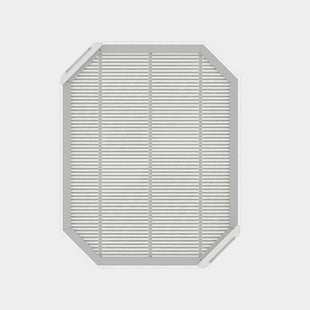Alas, you have determined you need a humidifier for your space. Decision is the first step, now you need to know the different types of humidifiers and what to look for in a humidifier. More generally, you may just need an answer to the question: what kind of humidifier do I need?
Look no further! We have created a handy-dandy humidifier guide for your perusal. We will answer your burning humidifier questions, and provide you with a few insider tips for selecting the best humidifier for your space.
Why Do I Need a Humidifier?

Before we dive into the types of humidifiers available and what to look for in a humidifier, it is important to fully understand why humidifiers are beneficial for your health and wellness.
According to the Environmental Protection Agency (EPA), maintaining an optimal level of humidity in your home can dramatically improve the concentration of certain indoor pollutants. The recommended home humidity levels range from 40% to 60% for maximum health benefits, however, most home humidity levels range from the high 20’s to the low 30’s.
Many factors can contribute to the depletion of moisture in your home air including: central heating during the winter months, increased use of air conditioning during the summer months, and poor home ventilation. Dry, indoor air can deplete the body of necessary moisture leading to: dry sinuses, increased susceptibility to colds and the flu, exacerbated allergy and asthma symptoms, structural damage to your home, and more.
The Benefits of Using a Humidifier
Regardless of the type of humidifier you choose for your home, increased humidity levels that sit in the optimal range can significantly improve your health, the health of your family and children, and the structural integrity of your home.
The benefits of regular humidifier use in your home include:
- Improved sinus congestion and nasal secretion
- Improved common symptoms of colds and the flu
- Decreased survival rate of airborne viruses including flu viruses and COVID-19
- Improved symptoms for allergy and asthma sufferers
- Improved infant congestion and disrupted breathing
- Improved hydration for skin that is dry, itchy, red and/or painful
- Reduced signs of aging including fine lines, wrinkles, crow’s feet, and sallow appearance
- Improved hydration for dry lips, dry nose, and other sensitive skin areas
- Improved hair quality including an improvement for dry, flaky scalp
- Reduced static buildup on surfaces, clothes, and other items in your home
- Improved health of wood surfaces including furniture, flooring, and decor

What Are the Different Types of Humidifiers?
When searching for an answer to the question: “What kind of humidifier do I need?” it is helpful to survey the different types of humidifiers on the market, including how they work and the pros and cons of each device.
There are two major categories of humidifiers: cool mist humidifiers and warm mist humidifiers also known as vaporizers. As a part of our humidifier guide, we will briefly describe each humidifier type including the subcategories of cool mist humidifiers.
Cool Mist Humidifiers
A cool mist humidifier is a humidifying device that releases cool mist into the surrounding environment. Cool mist humidifiers consume less energy than warm mist humidifiers and can ever-so-slightly cool the temperature of a room.
Evaporative Humidifiers
The evaporative humidifier is a cool mist humidifier that draws in moisture from the surrounding environment, fans the air through a moistened wick, and blows returns the air back into the room in the form of mist.
Ultrasonic Humidifiers
An ultrasonic humidifier is also a cool mist humidifier, though the ultrasonic humidifier works by vibrating a metal diaphragm at ultrasonic speed to create microscopic water molecules that are released into the room.
Warm Mist Humidifiers or Vaporizers
Warm mist humidifiers or vaporizers release warm mist or vapor into the surrounding environment providing a slight elevation in room temperature, though the warm mist itself is not hot.
A warm mist humidifier works by boiling water in the water tank, which creates vapor that is subsequently funneled into the room.
How Do I Choose the Right Size Humidifier for my Space?

Before we dive into our humidifier guide with helpful tips to help you sift through the various types of humidifiers and determine what to look for in a humidifier, we want to discuss how to choose the right sized humidifier for your space.
Luckily, this process is straightforward and requires very little work on your part. All you need is either a blueprint of your home, a measuring tape, or an old home listing. You will need to determine the square footage of the room you intend to humidify; the resulting square footage will equate to the output you need to effectively humidify your space.
For example, Canopy Humidifier has a 500 square foot output, which means that it will effectively humidify a room that is 500 square feet or less. You do want to make sure that the types of humidifiers you research have an output within 50 to 100 square feet of the actual square footage of your space to avoid over-humidifying your room. Too much humidity can breed bacteria, mold, and other unwanted house guests.
Tips for Choosing the Best Humidifier for Your Space
So, what kind of humidifier do I need? How do I know what to look for in a humidifier?
Choosing the best humidifier for your space is an important step towards optimizing your health and the health of your family and home space. We gathered our best tips for sorting through the different types of humidifiers to find the best humidifier for your home.
Tip #1: Consider who will be using the humidifier.
Tip #1 and the most important tip when determining what to look for in a humidifier is to firmly grasp who exactly will be the end recipient of the increased humidity. Are you looking to add a humidifier to your infant’s nursery? Does your child, partner, or yourself suffer from allergies or asthma? Are you just looking to reap the benefits of increased humidity?

If you intend to place a humidifier in your baby’s nursery or your small child’s room, you need a cool mist humidifier. The American Association of Pediatricians (AAP) consider warm mist humidifiers a burn hazard, and recommend against putting this type of humidifier in your child’s room for safety.
If you or someone in your household suffers from allergies or asthma, it is best to look for a cool mist humidifier with anti-mold features, which can further exacerbate allergy and asthma symptoms. Canopy Humidifier features innovative anti-mold technology that allows pure, hydrated air to enter your space. UV lights line the inside of the device killing 99.9% of bacteria and intruders that can be present in the water tank while the paper filter traps any remaining stragglers before the hydrated air is fanned back into the room.
A warm mist humidifier can be a nice addition to a home during the winter months as the temperatures drop. It is important to keep in mind that while the boiling of water in the water tank eliminates bacteria and build-up reducing potential allergy and asthma triggers, the warm mist can lead to swollen sinus passages that can negatively impact allergy and asthma sufferers.
Tip #2: Consider where you intend on placing your humidifier.
After determining who the intended audience is for your humidifier, you need to consider where you intend on placing your humidifier. Do you have ample counter space or do you have narrow spacing on your bedside table?
A compact humidifier with a small footprint is generally the best way to go regardless of your space. However, a larger space may require a larger floor standing device that can adequately humidify your space with sufficient output.
Tip #3: Research the device maintenance requirements.
Last, but certainly not least in our humidifier guide is device maintenance requirements. When searching through the types of humidifiers available on the market, you want to keep a close eye on the device maintenance requirements.
Traditional humidifiers require a weekly deep clean, which entails emptying your device, creating a white vinegar soak, wiping down the outside of your device, and rinsing all washable components with fresh water.
If you consider yourself a low maintenance person, or if you have a packed schedule with little room for extra responsibilities, it is important to make sure that the device maintenance requirements are realistic for your weekly schedule. Canopy Humidifier is easy to clean with dishwasher safe components; just pop your Canopy parts in the dishwasher on a regular cycle and reassemble the device once the load is complete.






























